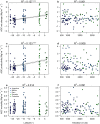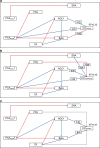Mature Andean forests as globally important carbon sinks and future carbon refuges
- PMID: 33837222
- PMCID: PMC8035207
- DOI: 10.1038/s41467-021-22459-8
Mature Andean forests as globally important carbon sinks and future carbon refuges
Erratum in
-
Author Correction: Mature Andean forests as globally important carbon sinks and future carbon refuges.Nat Commun. 2021 Jun 8;12(1):3617. doi: 10.1038/s41467-021-23955-7. Nat Commun. 2021. PMID: 34108485 Free PMC article. No abstract available.
Abstract
It is largely unknown how South America's Andean forests affect the global carbon cycle, and thus regulate climate change. Here, we measure aboveground carbon dynamics over the past two decades in 119 monitoring plots spanning a range of >3000 m elevation across the subtropical and tropical Andes. Our results show that Andean forests act as strong sinks for aboveground carbon (0.67 ± 0.08 Mg C ha-1 y-1) and have a high potential to serve as future carbon refuges. Aboveground carbon dynamics of Andean forests are driven by abiotic and biotic factors, such as climate and size-dependent mortality of trees. The increasing aboveground carbon stocks offset the estimated C emissions due to deforestation between 2003 and 2014, resulting in a net total uptake of 0.027 Pg C y-1. Reducing deforestation will increase Andean aboveground carbon stocks, facilitate upward species migrations, and allow for recovery of biomass losses due to climate change.
Conflict of interest statement
The authors declare no competing interests.
Figures



References
-
- Pan Y, et al. A large and persistent carbon sink in the world’s forests. Science. 2011;333:988–993. - PubMed
-
- Brienen RJW, et al. Long-term decline of the Amazon carbon sink. Nature. 2015;519:344–348. - PubMed
-
- Immerzeel WW, et al. Importance and vulnerability of the world’s wáter towers. Nature. 2020;577:364–369. - PubMed
Publication types
MeSH terms
Substances
Associated data
LinkOut - more resources
Full Text Sources
Other Literature Sources
Medical
Research Materials
Miscellaneous

